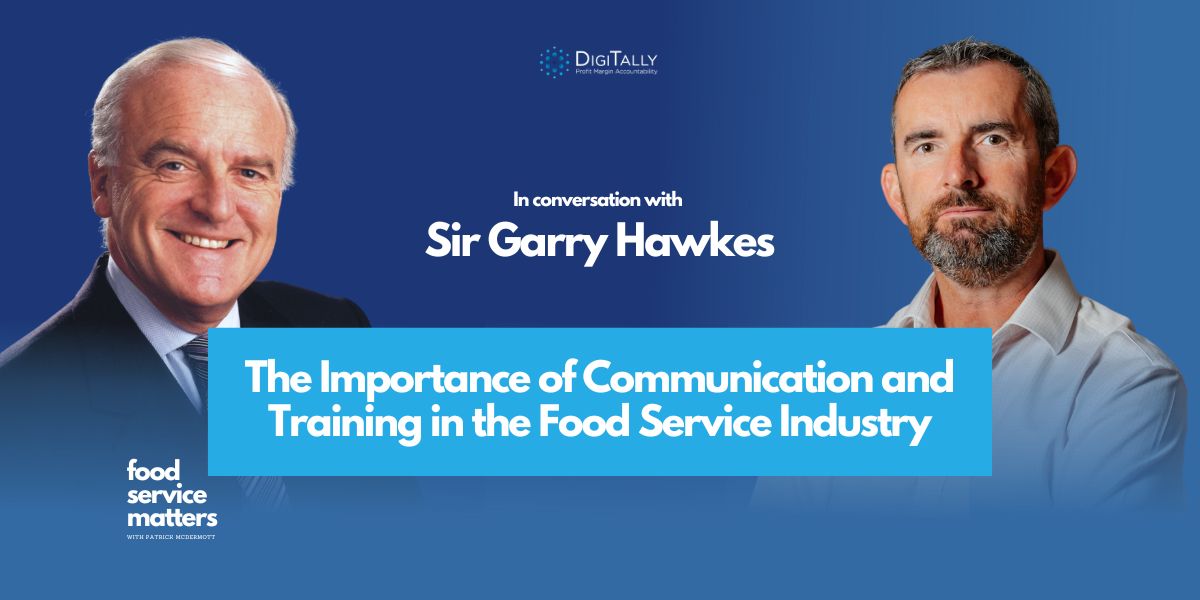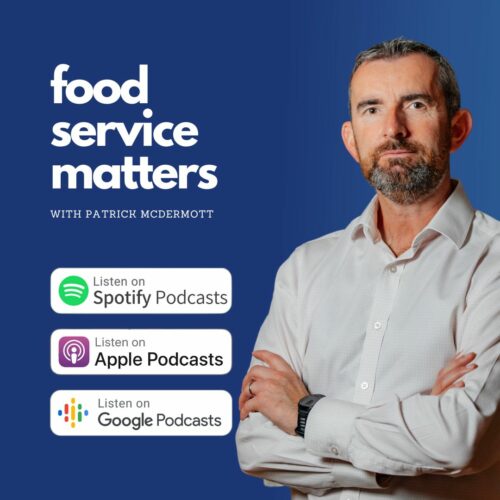
The food service industry relies heavily on people – both employees and clients – which is why effective communication and staff training are crucial to an establishment’s success.
In this blog post, DigiTally CEO Patrick McDermott talks with industry veteran Sir Garry Hawkes CBE to gain insight into how training, development and effective communication were instrumental to the success of the food service companies he worked for.
How training in the food service industry began
In the 1950s and 60s, formal training in the food service sector was rare. Sir Garry points out that managers often came from an army background, with little formal business education. It was at this time that some companies saw real value in investing in their staff’s training and development.
“I interviewed at Peter Merchant Ltd (the forerunner to Gardner Merchant) in Sheffield, which I soon realised was a more professional organisation than what I was used to,” he recalls. “I remember watching this room, which was a staff restaurant, and there were two rows of men in white coats. I thought, ‘What are they doing?’ They were the training team, and that was my introduction to food service training.”
The company invested in training staff on-site on everything from food safety to bookkeeping. This was before digital communication methods became so pervasive, yet having consistent systems of information sharing was still vital. This experience stuck with Sir Garry, who went on to emphasise the importance of proper staff training himself when he became Managing Director of Gardner Merchant, where he established a training centre so every staff member could learn the basics.
“We started with a small training school in Eastbourne,” he explains. “It didn’t cost a lot of money, but it worked. Everybody went through it, like national service. All the regional directors had to go and cook the food, plan the menu, serve it, and do the basics of the job to prove we knew what we were talking about… and that was successful.”
Building a cohesive team
In the pre-digital era, Sir Garry focused on bringing staff together through regular on-site team meetings and training and development experiences.
“I always said it was like an integrated team structure. You’re either running a team or are part of a team at the same time. So as a team leader, like a regional director, you’d attend a meeting of area directors, take in the information and listen to what is said about it.”
Sir Garry also established a company culture that truly treasures people and emphasises the value of making staff feel personally invested in the business.
“I believe in ownership – that if people own the situation psychologically, as far as possible, it motivates them,” he says.
As Sir Garry moved up into regional management positions, he focused on bringing his wider team together regularly because he believes in the importance of face-to-face communication.
“I’m a big believer in meetings,” he says. “I don’t believe in technology in this regard. We used to bring all our senior management together every week in the boardroom, including the Dutch team and anybody else in Europe.”
By meeting regularly and sharing results, company vision and strategy, Sir Garry was able to foster an integrated team environment despite staff being in different parts of the world.
Clear and timely communication
In the early days of the food service industry, when quick communication methods were less available than today, Sir Garry insisted on frequent interaction, whether through meetings or newsletters. And when decisions needed to be made quickly, he used the latest technology available at the time. Even without today’s technology, Sir Garry understood the importance of equipping his team to communicate timely updates during periods of change.
“In those days, we had cars with telephones in them,” he remembers, “because it was before mobile phones took off. I had a driver so that I could sit and take calls.
“I remember a time when we were driving towards the motorway and the phone rang with news that this major deal that Gardner Merchant was working on was called off. I said, ‘I need to see this in writing so I can officially tell people that the deal is off. Will you send me a fax?’ The fax was the last thing that ever worked for me because you could print it out straight away!”
While practices have now modernised significantly, the foundations Sir Garry built over his outstanding career demonstrate how instrumental staff training, team building and effective communication were in driving success and quality in the food service industry – lessons that still apply today.
Patrick is CEO of stocktaking app DigiTally, which is playing an increasingly important role as an intuitive and interconnected stock management system that keeps your food service business up to date and helps combat food waste. Keen to learn more? Let’s talk! Book a 30-minute call with Patrick and get your demo set up today.



